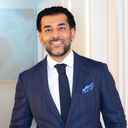Thank you for your question. You state for your acne scars, after you underwent CO2 laser treatment you became aware the treatment was about 50% effective in improving acne scars, so you want to know when to follow-up the treatment with a 1540nm laser, and how long after initial treatment can you do that.


